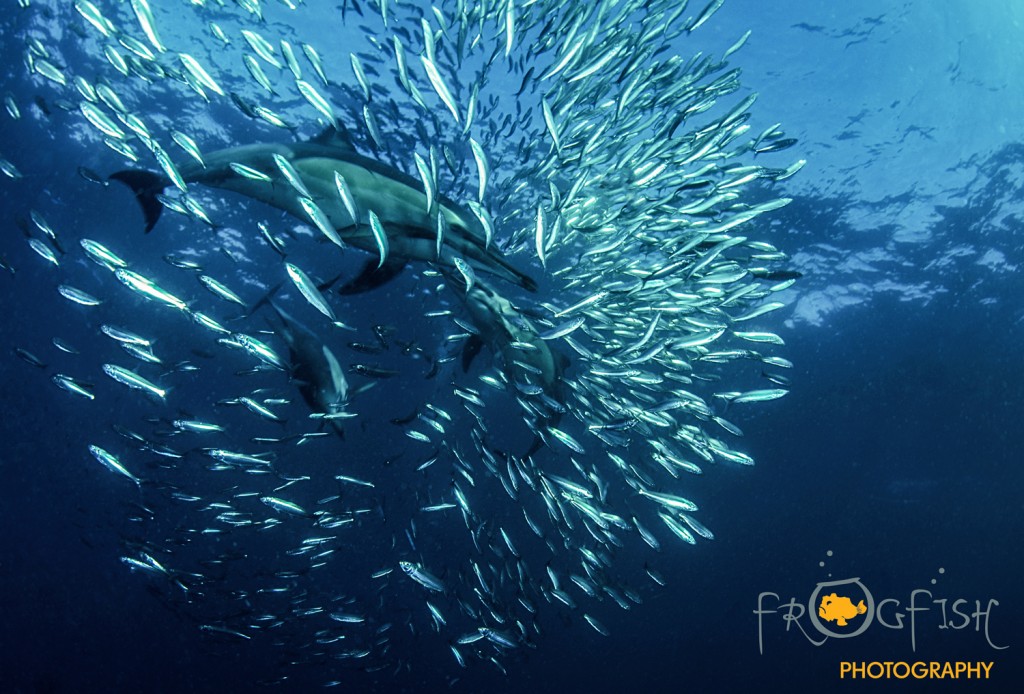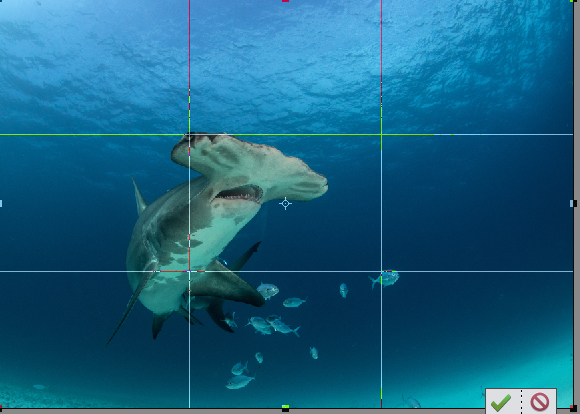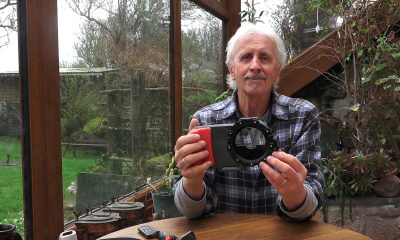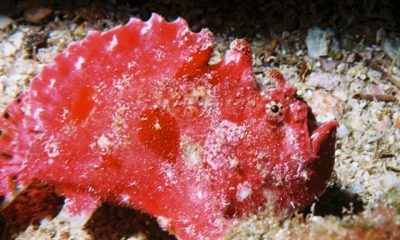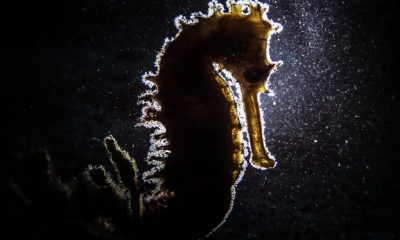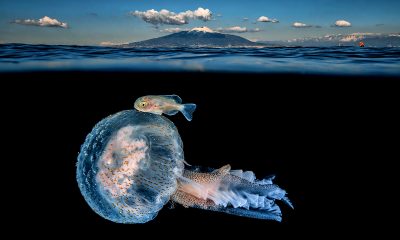News
Underwater Photography Essentials: Part 4
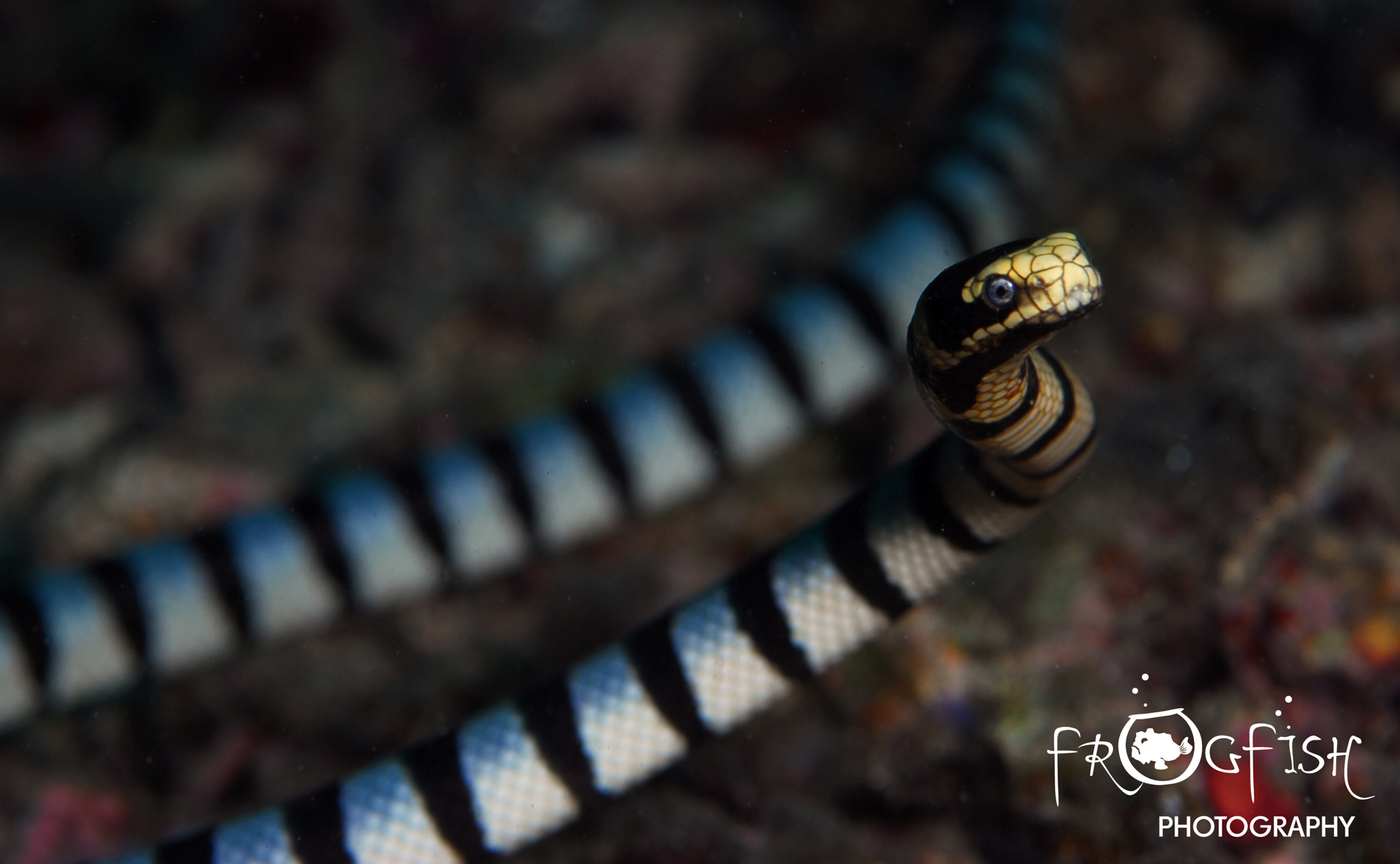
Tips, ideas and advice for budding underwater photographers
by Nick Robertson-Brown FRPS
Part 4: Composition – Rule of Thirds
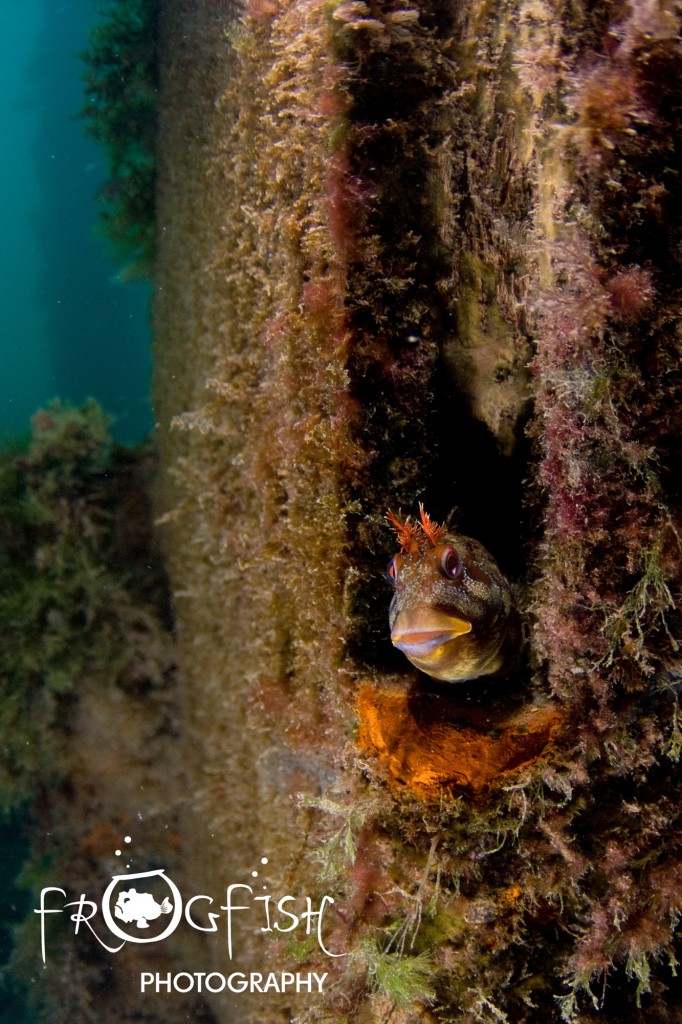 So far in this series we have discussed the technical aspects of how we get the right amount of light onto our subject in order to present it as we would like people to see it, i.e. as we imagine it looking through the viewfinder or on the screen. This technical part of capturing the image has more than a small element of artistry, as changing the f-stop will create a greater or lesser depth of field, allowing more or less of the background to be a part of the image. However, composition is pure art, and as you manoeuvre the viewfinder to your eye, or look at the screen on the back of your camera, you should now be thinking about how you want to frame the situation that you have in front of you. If you have got all the technical aspects, correctly set, then all you now need to do is to compose the scene.
So far in this series we have discussed the technical aspects of how we get the right amount of light onto our subject in order to present it as we would like people to see it, i.e. as we imagine it looking through the viewfinder or on the screen. This technical part of capturing the image has more than a small element of artistry, as changing the f-stop will create a greater or lesser depth of field, allowing more or less of the background to be a part of the image. However, composition is pure art, and as you manoeuvre the viewfinder to your eye, or look at the screen on the back of your camera, you should now be thinking about how you want to frame the situation that you have in front of you. If you have got all the technical aspects, correctly set, then all you now need to do is to compose the scene.
The first thing you have to decide when composing or framing your image is to know what the subject is. This may seem like a ridiculous thing to say but you need to decide on a single focal point; something, or someone you want to draw the viewer’s eye towards. This does not mean that you can only photograph one subject in the image, but you should make one individual, or one group of individuals, the centre of your attention – the subject. It shouldn’t necessarily be in the centre of your framing either, rather you should try to lead the viewer’s eye line through or towards it. You may capture a fantastic image of say a cuttlefish in aggressive mode attacking it’s reflection in your lens, but if the background is messy or interfering with the shot, then the image probably will not work. Anything in your image that distracts the eye away from the subject should be eliminated. Another important factor is the negative space, and any negative space that you use in an image can be as important, sometimes more so, than your subject. Negative space is simply the area that surrounds an object and so this, by definition, defines the boundaries of the positive space that you are using for your subject.
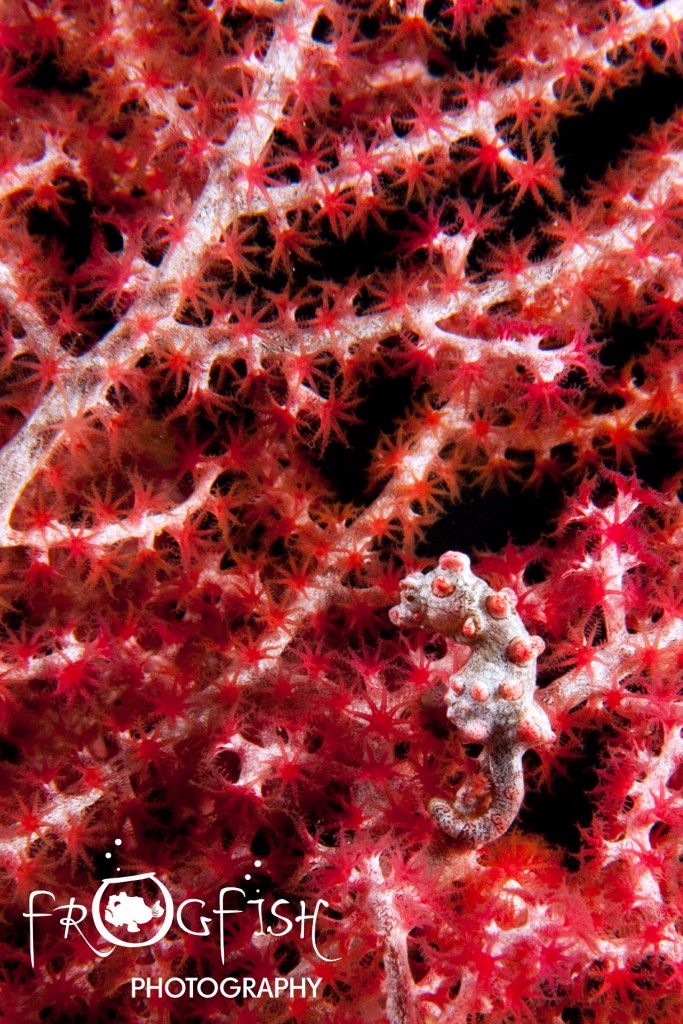 There may, of course, be occasions when you deliberately want to put your subject in its environment. A common, but often successful, use of this technique is the anemone fish protecting or guarding its host anemone or another example is a pygmy seahorse in its sea fan.
There may, of course, be occasions when you deliberately want to put your subject in its environment. A common, but often successful, use of this technique is the anemone fish protecting or guarding its host anemone or another example is a pygmy seahorse in its sea fan.
In any photography book, you can find rules and guidelines about composing images, but you should always remember that they are just guidelines and some of the best pictures can break all the rules. It is, however, a good idea to have them in your head as it has been proved many times over that there are certain formats that the human mind find appealing.
Rule of Thirds
The first of these is the rule of thirds, and this should be one key component to consider when you are framing your image. The idea of the rule of thirds is to divide your frame into nine equal sections and using this imaginary framework, you can then decide where to put your subject. Many cameras have a function where you can see this grid on the screen to help you with this. This can be very helpful as it may assist you in composing your image in a variety of ways. Firstly, you should look at the four centre crosses where the lines intersect, and rather than putting the centre of interest (your subject) in the middle of the frame, you should pick out a prominent feature from your subject and place it at one of these intersections. Putting your subject right in the middle of the image is called bullseye-ing and generally, although not always, doesn’t work.
Another way to view the rule of thirds is to look at the horizontal divisions where, for example, the top third could be used as negative space, with the subject placed across the middle and the supporting baseline, running along the bottom. This technique is particularly useful when photographing subjects such as underwater landscapes or a wide-angle shot of a wreck. You can use the foreground as a supporting baseline, with a reef or a wreck along the centre and the top third should be the negative space, although this would also work really well with a diver or other subject hanging in it to balance the overall image.
————————————————————————————————————————————————————
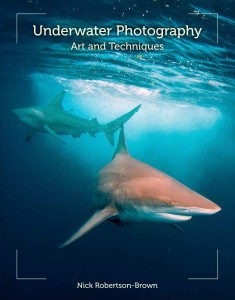 Do you want to learn more? You can pick up a copy of Nick’s book “Underwater Photography Art & Techniques” by clicking here. For a signed copy, click here.
Do you want to learn more? You can pick up a copy of Nick’s book “Underwater Photography Art & Techniques” by clicking here. For a signed copy, click here.
Underwater Photography Courses
Contact Nick for information on the Frogfish Photography Complete Underwater Photography Award, designed for 1:1 and small group sessions to improve your underwater photography at your pace.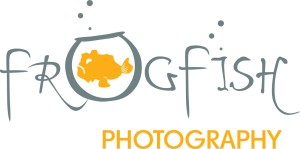
www.frogfishphotography.com | frogfishphotos@gmail.com | ![]() +44 (0)161 9177101
+44 (0)161 9177101
News
Dive Worldwide Announces Bite-Back as its Charity of the Year

Over the next 12 months, specialist scuba holiday company Dive Worldwide will be supporting Bite-Back Shark & Marine Conservation with donations collected from client bookings to any one of its stunning dive destinations around the world. The independently-owned operator expects to raise £3000 for the UK charity.
Manager at Dive Worldwide, Phil North, said: “We’re especially excited to work with Bite-Back and support its intelligent, creative and results-driven campaigns to end the UK trade in shark products and prompt a change in attitudes to the ocean’s most maligned inhabitant.”
Bite-Back is running campaigns to hold the media to account on the way it reports shark news along with a brand new nationwide education programme. Last year the charity was credited for spearheading a UK ban on the import and export of shark fins.
Campaign director at Bite-Back, Graham Buckingham, said: “We’re enormously grateful to Dive Worldwide for choosing to support Bite-Back. The company’s commitment to conservation helps set it apart from other tour operators and we’re certain its clients admire and respect that policy. For us, the affiliation is huge and helps us look to the future with confidence we can deliver against key conservation programmes.”
To launch the fundraising initiative, Phil North presented Graham Buckingham with a cheque for £1,000.
Visit Dive Worldwide to discover its diverse range of international scuba adventures and visit Bite-Back to learn more about the charity’s campaigns.
MORE INFORMATION
Call Graham Buckingham on 07810 454 266 or email graham@bite-back.com
Gear News
Scubapro Free Octopus Promotion 2024

Free Octopus with every purchase of a SCUBAPRO regulator system
Just in time for the spring season, divers can save money with the FREE OCTOPUS SPRING PROMOTION! Until July 31st SCUBAPRO offers an Octopus for free
with every purchase of a regulator system!
Get a free S270 OCTOPUS with purchase of these combinations:
MK25 EVO or MK19 EVO with A700
MK25 EVO or MK19 EVO with S620Ti
MK25 EVO or MK19 EVO with D420
MK25 EVO Din mit S620Ti-X
Get a free R105 OCTOPUS with purchase of the following combinations:
MK25 EVO or MK19 EVO with G260
MK25 EVO or MK17 EVO with S600
SCUBAPRO offers a 30-year first owner warranty on all regulators, with a revision period of two years or 100 dives. All SCUBAPRO regulators are of course certified according to the new European test standard EN250-2014.
Available at participating SCUBAPRO dealers. Promotion may not be available in all regions. Find an authorized SCUBAPRO Dealer at scubapro.com.
More information available on www.scubapro.com.
-

 News3 months ago
News3 months agoHone your underwater photography skills with Alphamarine Photography at Red Sea Diving Safari in March
-

 News3 months ago
News3 months agoCapturing Critters in Lembeh Underwater Photography Workshop 2024: Event Roundup
-

 Marine Life & Conservation Blogs3 months ago
Marine Life & Conservation Blogs3 months agoCreature Feature: Swell Sharks
-

 Blogs2 months ago
Blogs2 months agoMurex Resorts: Passport to Paradise!
-

 Blogs2 months ago
Blogs2 months agoDiver Discovering Whale Skeletons Beneath Ice Judged World’s Best Underwater Photograph
-

 Marine Life & Conservation2 months ago
Marine Life & Conservation2 months agoSave the Manatee Club launches brand new webcams at Silver Springs State Park, Florida
-

 Gear Reviews3 months ago
Gear Reviews3 months agoGear Review: Oceanic+ Dive Housing for iPhone
-

 Gear Reviews2 weeks ago
Gear Reviews2 weeks agoGEAR REVIEW – Revolutionising Diving Comfort: The Sharkskin T2 Chillproof Suit


